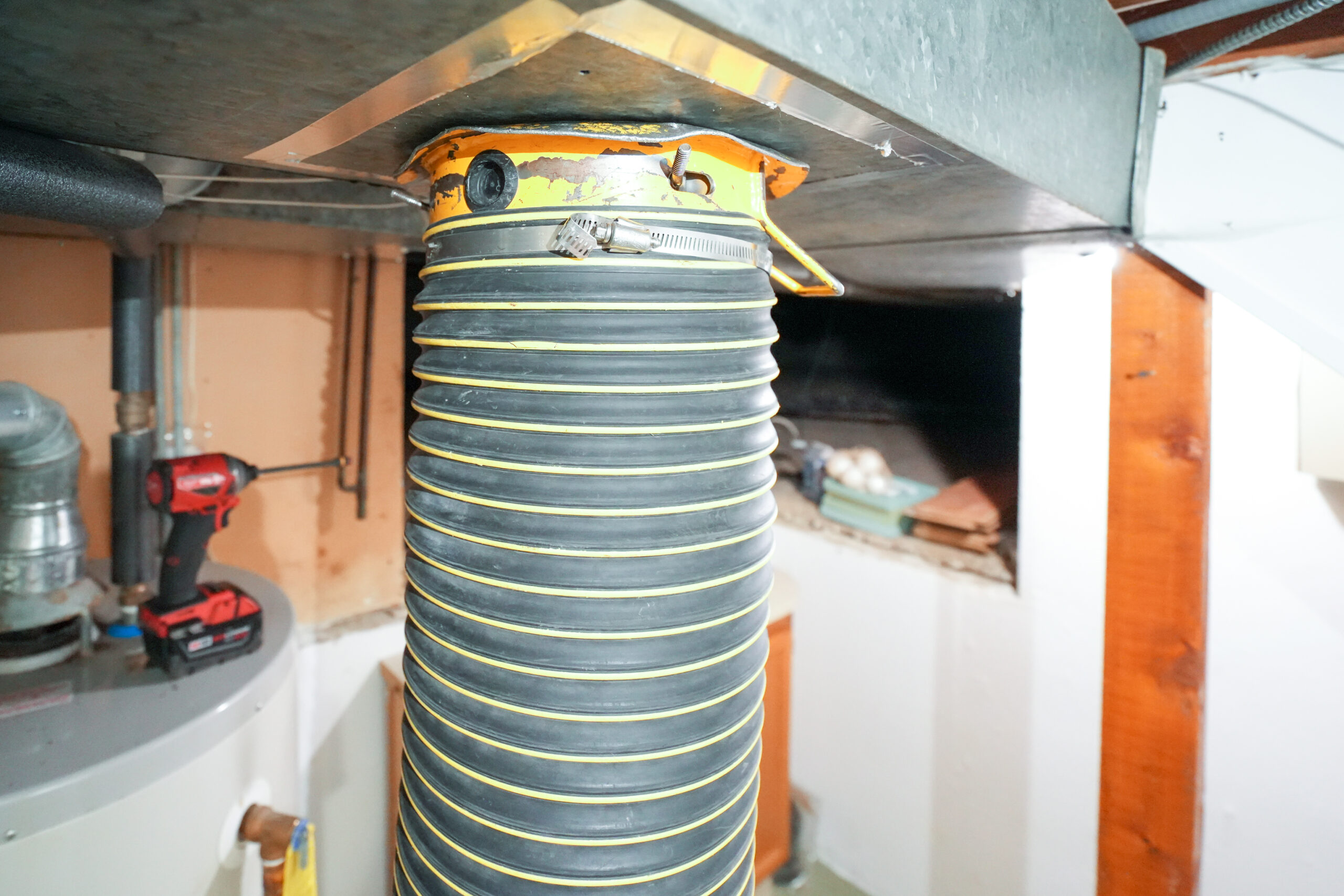Introduction
As temperatures drop and fireplaces roar back to life, chimney safety becomes more than just a seasonal concern. One of the most overlooked dangers is creosote buildup—a thick, tar-like substance that collects inside your flue every time you burn wood. Left untreated, it becomes a leading cause of chimney fires and poor indoor air quality. Before winter sets in, clearing this buildup is a crucial task that can protect your home, enhance your heating efficiency, and extend the life of your fireplace system. Professional inspections and cleanings are not just helpful—they’re necessary to avoid high-risk conditions.
Remove Creosote to Prevent Winter Chimney Fires
1. What Is Creosote and Why Does It Form So Quickly?
Creosote is a highly flammable residue that forms when wood burns and releases smoke, gases, and moisture. As these byproducts move up the chimney, they cool and condense on the flue walls, turning into sticky or flaky deposits. Even seasoned hardwoods leave behind some creosote, but green logs and softwoods contribute much more. As creosote builds layer by layer, each fire thickens the deposit, making it harder to remove and more dangerous to ignore. Regular chimney cleaning in Glenview, IL, can address buildup before it escalates. Creosote is classified into three levels: Level 1 is light, dusty soot easily brushed away. Level 2 is sticky and tar-like, needing firm brushing and tools. Level 3 is a hardened, glazed layer that often requires professional removal. Identifying and treating creosote early helps avoid costly damage and serious fire risk.
2. The Fire Hazard Lurking in Your Chimney Walls
The most serious threat from the creosote layer is chimney fires. These fires often start quietly and spread quickly, fueled by layers of this highly combustible substance. Chimney fires can reach temperatures over 2000°F, which is enough to crack tiles, warp metal liners, and ignite nearby framing inside your walls. Many homeowners don’t realize a chimney fire occurred until it’s too late. Signs include loud popping sounds, dense smoke, or flakes of creosote falling into the hearth. What makes chimney fires especially dangerous is their stealthy nature. You might not even be home when it starts. And if your chimney isn’t lined with fire-resistant material, flames can escape into your attic or walls in minutes. By removing creosote before winter, you reduce the primary fuel source for these fires and drastically lower the risk of a catastrophic event.
3. Heating Efficiency Drops When Creosote Levels Rise
A clean chimney supports healthy airflow, allowing heat and combustion byproducts to escape properly. But when soot accumulation blocks that flow, your fireplace or stove has to work harder to draw in oxygen and vent out smoke. That results in lower burn efficiency, colder rooms, and a more frequent need for firewood. You may also notice smoke backing into your room or more soot collecting on surfaces. Regular cleaning improves draft, combustion, and temperature consistency throughout your home. Creosote can also damage chimney components, such as the damper, flue liner, and smoke shelf. A thorough chimney inspection can reveal whether these critical parts are still functioning properly or need repair. As they degrade, your fireplace system becomes less effective at delivering heat. You’ll spend more on wood or energy while receiving less warmth. Scheduling pre-winter maintenance helps you avoid these pitfalls and maintain consistent comfort when it matters most.
4. Indoor Air Quality Suffers With Poor Chimney Maintenance
In addition to fire risks and heat loss, the creosote layer can seriously degrade your indoor air quality. As smoke, soot, and toxic gases—such as carbon monoxide—back up into your home, they introduce dangerous pollutants that impact breathing, especially for children, elderly individuals, and people with asthma or allergies. A blocked flue increases the chance of these harmful byproducts staying inside rather than venting outside. Creosote also releases an unpleasant, acrid odor when heated, making your living space less inviting. This smell can linger long after the fire is out and is especially noticeable in tightly sealed modern homes. Besides being unpleasant, these odors signal that creosote levels have reached a point where health and safety are at risk. Annual inspections paired with thorough cleanings can help prevent these problems from developing.
5. Professional Removal Is Safer Than DIY Cleaning
Removing smoke residue isn’t a task for a basic chimney brush or household cleaner. Level 1 creosote is flaky and relatively easy to remove, but Level 2 (glassy or tar-like) and Level 3 (thick and hardened) require specialized tools and industry-grade vacuums. Certified chimney professionals use rotary brushes, camera inspections, and vacuums that control fine particles. They also assess whether the buildup has damaged the structure of the chimney, such as liner cracks or mortar erosion. DIY attempts can leave dangerous deposits behind. Booking a fireplace cleaning service near Glenview, IL, is a smarter and safer option before heating season begins.
Professional technicians also use diagnostic tools to check for airflow issues, blockages, or leaks that homeowners might miss. They can recommend whether chimney caps or liners are needed, offer guidance on firewood choices, and help create a maintenance schedule tailored to your fireplace use. These added services are invaluable in keeping your system safe and high-performing year-round.
As winter approaches, the urgency to address creosote buildup cannot be overstated. From preventing devastating chimney fires to improving air quality and heating efficiency, regular chimney maintenance plays a key role in home safety. The risk only grows as the cold sets in, and more fires are burned without cleaning the vent pipe. Professional service ensures that hidden dangers are addressed. Act fast to reduce hazards and enjoy a warmer, healthier home.
Conclusion
Keep your family safe and your home warm this winter—schedule expert chimney care before the cold settles in. For trusted service that targets creosote buildup, call our professionals at Sai Air Duct at 224-256-0071 and breathe easier all season long.
📌Trusted experts near you! Stop by our Sai Air Duct for reliable dryer-vent-cleaning or Chimney Sweep realted.

